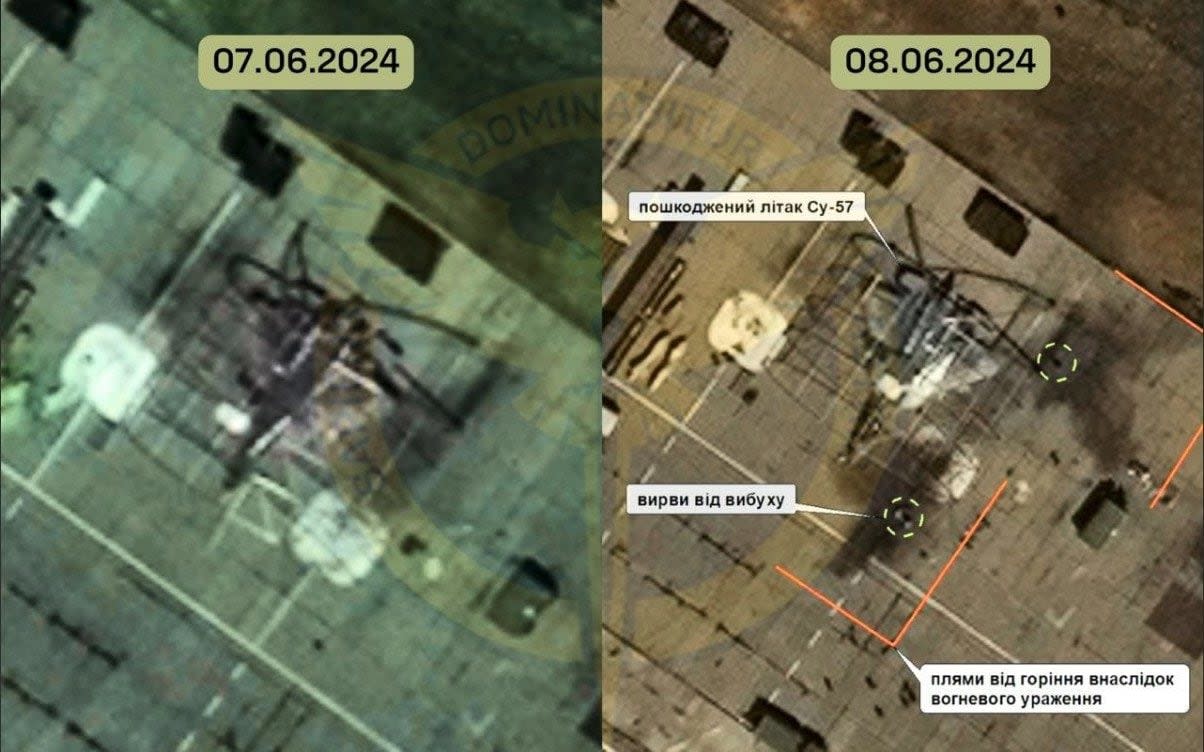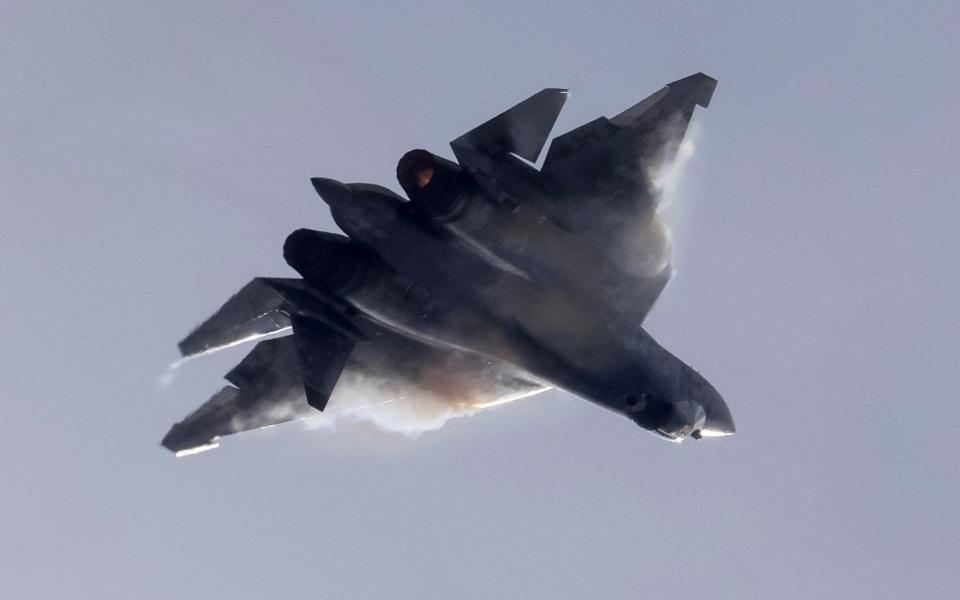Ukraine strikes Russia’s most advanced stealth fighter jet for first time

Ukraine has hit Russia’s most advanced stealth fighter jet for the first time in a drone strike 365 miles behind the frontline.
Ukraine’s GUR military intelligence said that the drone hit the airfield in Russia’s Astrakhan region by the Caspian Sea on Saturday, destroying the Su-57 fighter bomber.
“The defeat of the Su-57 is the first such case in history,” it said.
Photographs showed debris scattered around the Akhtubinsk airfield and the faint outline of what appears to be the Su-57 fighter bomber. Russia is thought to have only a handful of Su-57s in service.
The bomber was designed as a replacement for the ageing MiG-29 and Su-27, and only came into service in the Russian Air Force in December 2020.
Each Su-57 fighter bomber costs an estimated 2.2 billion roubles (£19.5 million) to manufacture.
As well as its much-vaunted stealth abilities such as radar-absorbing fibreglass, the Su-57 is highly regarded for its “super manoeuverability” and its large payload capacity that allows it to carry and fire Kh-59 and Kh-69 hypersonic missiles known as Daggers.
The Russian ministry of defence has not commented, but the country’s military bloggers confirmed the strike.

“Yes, yesterday the airfield in Akhtubinsk was attacked by drones. Three of them arrived,” the Fighterbomber Telegram channel told its 460,000 subscribers. “A Su-57 was damaged by shrapnel. It is now being determined whether it can be restored or not.”
Rybar, which has 1.2 million subscribers on its Telegram channel, accused Russian officials of not doing enough to protect Russian warplanes at vulnerable airfields.
“For the cost of repairing one Su-57, it was possible to fully equip several operational-tactical aircraft with light shelters near the frontline,” it said. “But despite two years of hostilities and frequent attacks against aircraft by drones, those in charge did not bother to do this.”
Another Russian military blogger mocked Russian officials for trying to deceive Ukraine and its allies with “poorly” painted pictures of fake Su-57s.
“The poorly painted silhouette of the Su-57 at Akhtubinsk airfield of course failed to deceive modern Nato satellites with good photographic resolution,” said the War Observer Telegram channel.
‘Slap in the face’
Ukrainians celebrated the strike on the Su-57 online. Maria Avdeeva, a Ukrainian commentator, described the strike as a “slap in the face” for the Kremlin.
Vadym Labas, a defence analyst, said that it showed the weakness of Russia’s airfield defence systems.
“The main thing about this attack is that for the second day in a row, our drones have broken through the airfield defences,” he said. “Russia lacks air defence systems to defend its airfields.”
A few hours before the strike on the Su-57, Ukrainian drones had struck the Mozdok air base in North Ossetia, southern Russia, which hosts the Kremlin’s Tu-22M heavy bombers.
Russia’s ministry of defence said that its forces shot down the three drones and Ukrainian officials did not claim any hits on the heavy bombers.
The hit on the fighter bomber will anger Vladimir Putin who has been incensed by the failure of his navy and air force to protect their expensive warships and fighter jets from Ukrainian drone and missile attacks.
The attack also opened the Russian ministry of defence up to more criticism only a month after Putin purged its ranks of top officials he thought were corrupt and incompetent.

 Yahoo News
Yahoo News 
